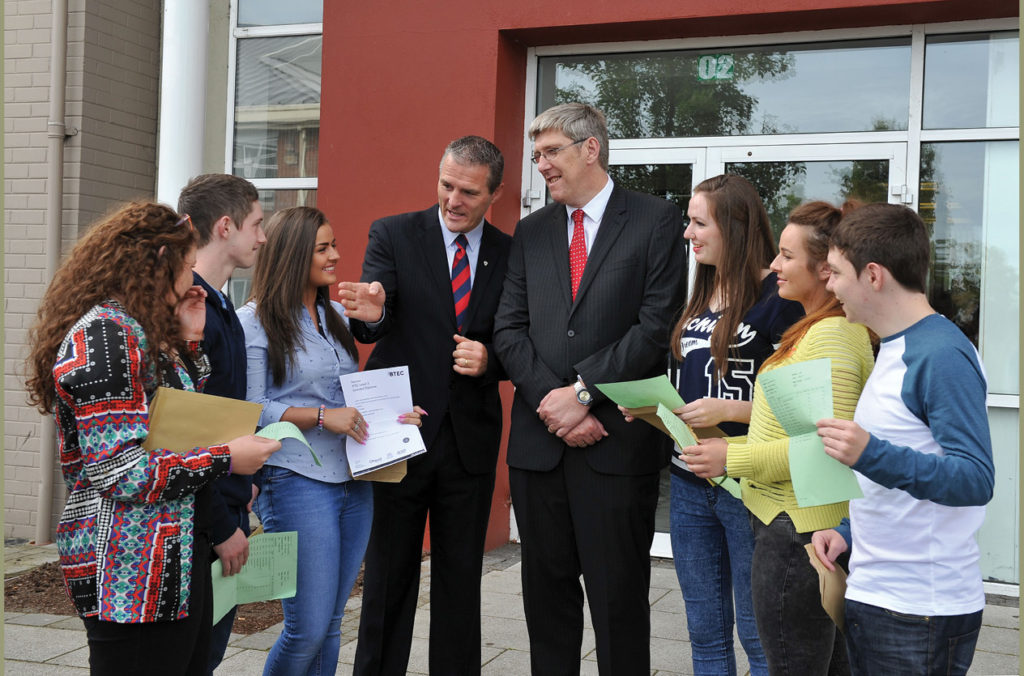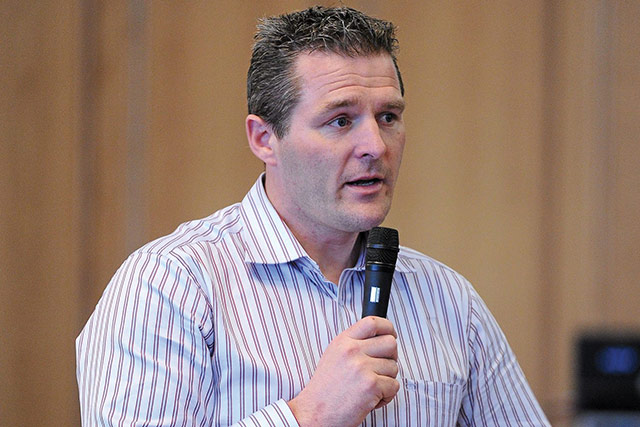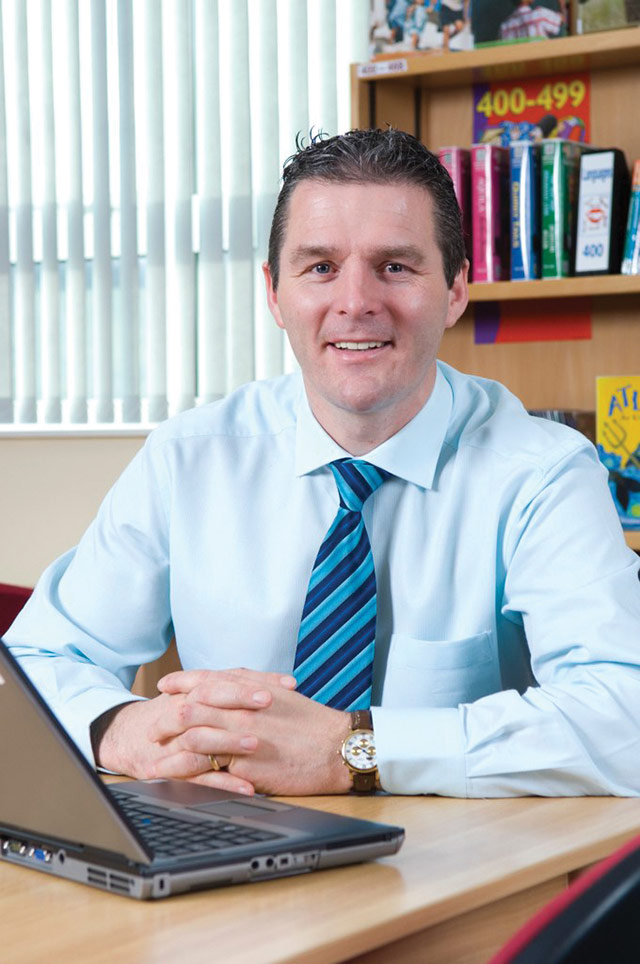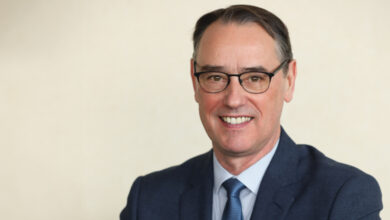Education: a perspective

agendaNi’s Ciarán Galway speaks with prominent post-primary principal Jarlath Burns on his current assessment of education in the North.
Jarlath Burns is an intriguing personality. His presence transcends the boundaries of several societal strata. GAA icon; television pundit; newspaper columnist; Gaeilgeoir; and former member of the Eames-Bradley consultative Group, the enigmatic Burns is widely lauded as a role model within his South Armagh community and beyond. However, the badge he has worn most consistently is that of an educationalist.
A graduate of St Mary’s University College, Belfast, the Silverbridge man has remained in his role of post-primary teacher for 26 years. In 2013 he assumed the position of principal at St Paul’s High School, Bessbrook. The school has undergone a process of immense self-improvement under Burns and his predecessor, Oliver Mooney. A recent Education and Training Inspectorate report concluded that the school had attained ‘outstanding’ levels in relation to achievements and standards, provision for learning and leadership and management.
When questioned about his career path and devotion to the profession, Burns states: “I share a love for education with an awful lot of people here and we keep producing outstanding teachers. I never regretted becoming a teacher and there was not one day where I came into the school and I said ‘no, I should have thought about doing something else’, because I just love every minute of what I do.” He adds: “Being involved in the development and growth of young people is a real privilege. As an Irish teacher I was always interested in the language and I wanted to promote that as well.”
Challenges
When probed on the major challenges currently facing education, Burns provides a threefold answer. Firstly, he identifies the inherently fragmented nature of education in Northern Ireland. “In terms of infrastructure, within education we have so many sectors and so many fighting sectoral interests – you have the voluntary grammar schools, you have the Catholic maintained, you have the controlled schools, you have the integrated sector and you have the Irish-medium sector. There are very few areas of Ireland or England that have so many competing sectors and as result of that, inevitably, you are never going to fill all of the school places. That is always going to cause difficulties in terms of budgeting for education.”
Secondly, Burns highlights what he describes as an obsession with academic selection. “I totally and fundamentally disagree with it. You cannot on one side say that you are child-centred and on the other side inflict a test that has absolutely no educational or diagnostic value whatsoever for betterment of children. Yet in this jurisdiction there seems to be a fixation with the protection of some educational institutions at the expense of the broader education of the children. While people will point to A Level and particularly GCSE results being better here than elsewhere, the number of people who leave with nothing is also high.” The result, he contends: “Is that the best education is not going to the ablest children but to the best-placed children, those who can afford to enter into the private sector to have tutoring and that sort of thing. That is a challenge.”
A final challenge identified by Burns is the perception of university as the optimal post-A Level pathway available. “We are trying now to promote a culture that young people look towards apprenticeships as much as university because, while university is leaving young people with three great years of wonderful experiences, [they are also left with] a degree that they have to do something else thereafter to make themselves employable. We understand fully that that’s part of the coming out of young people and the growing up, that they want to go to college, but we also have to be mindful of the fact that we are preparing the workplace as well, for people and their careers.”
When pressed about the increasing emphasis being placed upon summative assessment results, Burns responds: “We try to avoid that. We keep pointing out to people that we are not a results factory.” While also conceding that results are obviously significant, he outlines: “We try to promote the whole skills agenda and we have five skills that we try to instil in pupils before leaving here. So they have their exams, but they also have flexibility, leadership, initiative, productivity and social skills. That’s something that we really push.”
Reacting to a query regarding the challenge posed to the vision of non-selective education by localities with a substantial grammar presence, Burns is reflective. “I think if you look at the places where you still have a strong grammar school ethos, if you look at Derry, West Belfast, Newry and Dungannon, they are the areas where the 11-plus actually did help to assist young people to emerge from poverty and use their education to better themselves. The children at those schools [now] are the children and grandchildren of those parents who went and those schools did something for them. They now have an affinity with those schools and that’s perfectly understandable.”

“You cannot on one side say that you are child-centred and on the other side inflict a test that has absolutely no educational or diagnostic value”
In Burns’ perspective, the existence of grammars is not necessarily detrimental to non-selective schools. “We have good relations and work very closely with the grammar schools in Newry. They do what they do, we do what we do. We’re all in it for the same reason – for the betterment of the pupils.”
Making progress
At the same time, St Paul’s has witnessed a significant leap in the percentage of boys receiving five ‘good’ GCSEs (A* – C, including English and maths). In fact, between 2013 and 2015, this figure soared from 36 per cent to 65 per cent. When asked whether the principles applied by his leadership team could be exported to other areas across the North with high levels of underachievement among male pupils, Burns unpretentiously notes: “There is no magic wand and nothing that I can say is going to be new.” However, several initiatives were implemented.
The senior management of St Paul’s recognised boys and pupils with special educational needs as the core groups requiring additional support. “I took my special educational needs co-ordinator off the timetable completely and indicated that I wanted those pupils to become a major priority in our school. Their attainment has gone up by 80 per cent over the [last] three years.” In relation to male pupils, Burns explains: “The first thing that we discovered was that boys prosper when they are working with other men. We realised that there were two types of men that we needed to work with: the young fella that is just out of university who [acts as] an older brother mentor and the older man who might take on the role of a father figure in a child’s life. So we began appointing men to the position of classroom assistant and we identified boys who we felt were faltering and we focused on them.”

In addition, the school adopted predicted grades as a baseline for underperforming students. “We could say to a fourth year or a fifth year, ‘this is what you are down to get, now what are you going to do about it?’ That can be a bit of an eye-opener to these pupils.” To scaffold these efforts, from January to May, St Paul’s runs a well-attended ‘Sunday study’ session from half five to half eight, presided over by Burns himself. In conjunction with this, students were consulted on the techniques they were using to study for exams and, subsequently, study skills become a separate area of focus.
However, Burns is unequivocal: “This has to fit into a framework where the pupils feel that you genuinely care for them. Not because of some cynical reason such as wanting to see the school doing well. You want to see them doing well.” Adding: “All of that takes hard work and out there, in that school, between 1,550 pupils and 100 teachers, serious work takes place.”
In terms of opportunity of schools, he asserts: “The biggest and most exciting thing that we have at the moment is the over-55 scheme, Investing in the Teaching Workforce. That is going to allow people who feel that they have given enough, at a particular age, the chance to leave and then allow us to bring in all these new people. Having said that, there is no substitute for experience. Some of the best teachers that I have are the longest-serving.”
Maintained sector
Burns is also a prominent defender of the maintained sector as a contributor to social cohesion. “Catholic education in Northern Ireland is not education for Catholics. You will be hard pressed if you walk around the school now to see any real, serious, outward sign that would be a put-off to a pupil of a different religion. We do that purposely because we have pupils from Newry High and Newtownhamilton High in the school, every day, accessing GCSEs.” He continues: “We have pupils in this school from all faiths and no faith. We do not push, in any way, the dogmatic elements of Catholicism on our pupils. But what we do push is the particular ethos that exists. It’s about understanding that we embrace diversity. Every single person is different and we don’t try to be the same. For example, we walked in the gay pride parade in Newry two years ago with students to show that, in our school, if you are gay or LGBT, that we will stand with you. That is promotion of diversity. The dignity of every of child is paramount.”
Nonetheless, Burns also acknowledges: “The integrated sector is doing fantastic work and I understand that the work that they are doing and I certainly wouldn’t condemn it. I think that they are brilliant schools, but I am for Catholic education. I think that we can all co-exist equally. I do not think, in any way, that Catholic schools are doing anything to not promote reconciliation. For example, we work very closely with the Orange Order. Last year, when the 12 July demonstration came here to Bessbrook, all the buses parked in [our] carpark. So it is not as if we are promoting anything other than those values that I told you about today. We live them as well.”
Asked if he could see a time when academic selection, rather than faith, would become the foremost fracture among education sectors, Burns replies: “It is very hard to say what the future is in education. It may well be that the economic system forces us down that road. If you look, for example, at the Lisanelly complex in Omagh, where you have all of those schools on the one campus, that is moving very close. We’re heavily involved in shared education with Newtownhamilton and Newry High Schools and that is working very well. It is working beyond the level of policy and ticking boxes and into genuine educational outcomes for pupils.”
However, he concedes: “I think it will be very difficult to ever change the system. There are very traditional attitudes towards education in Northern Ireland as evidenced by what I’ve said about people developing close affinities with schools and I don’t see in the near future, the next 10 or 20 years, that changing.”





